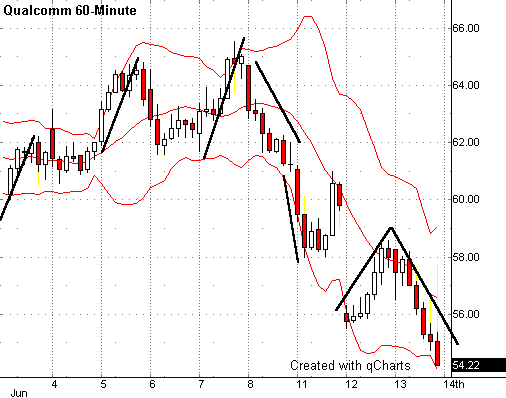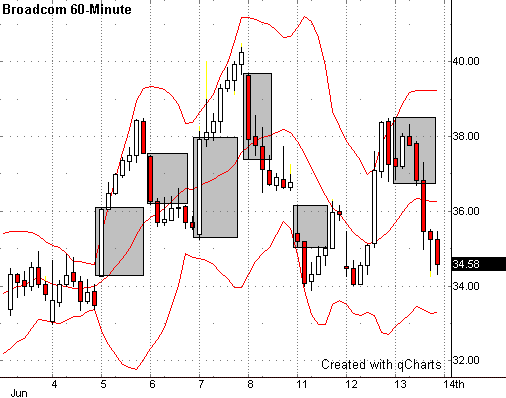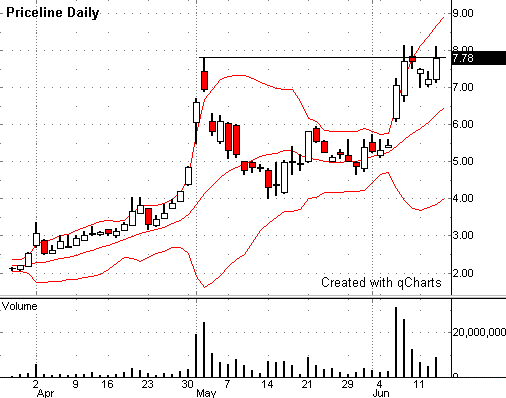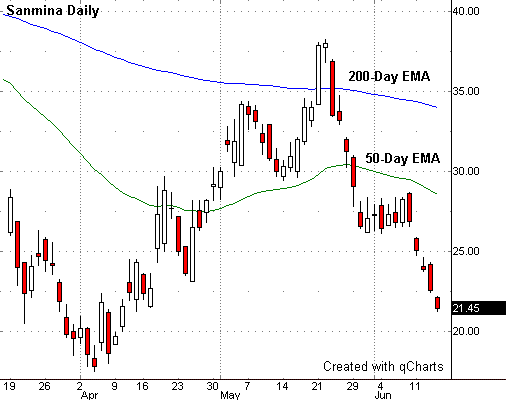Working Capital
Welcome to the school of what works. With the markets caught in their endless
wiggle-waggle, you might assume there are less ways to make a buck now than in
the past. But nothing could be further from the truth. Whenever one trading
strategy stops working, another one works better than ever. So it makes sense
that new methods are showing up to build profits in the current environment.
Market inefficiency drives the fuel of trading opportunity. This concept is
not as esoteric as it might sound. Take a new momentum market as an example.
When prices suddenly shoot higher, only a core group of market players notices
it and takes action. These smart folks are capitalizing on the new
inefficiency. But not for long. Each rising bar captures the attention of more
and more traders, until everyone sees the same thing. Right at that point the
market loses its inefficiency and subsequent rallies yield far less dependable
profits.
Sideways markets are much harder for the average trader to adapt and conquer,
so inefficiencies tend to last longer. First, there’s an unfortunate tendency to
see each directional swing as an awakening trend, rather than recognize them for
what they are. Second, most traders become trend followers and never really
learn how to trade rangebound markets. This forces them to commit frequent trend
relativity errors, like waiting for follow through days that never come.
A few bull sectors stand out in the recent price action. We discussed
computer gaming last week as a market leader. Biotech, waste management and
metals are all showing decent trends, up or down. But one of the hallmarks of
this bear market has been the way strong trends have evaporated as soon as we
start to talk about them. So we’ll nudge you in the direction of these
standouts, but don’t blame us if they just stop working.
Reducing holding period and avoiding overnight positions has been a winning
strategy during the last few weeks. Sharp reversals have followed both rally and
selloff days. Surprisingly, the intraday arena has exhibited fewer whipsaws and
fakeouts than we commonly associate with this volatile trading environment.

Take a look at Qualcomm over the last nine days. A simple trading strategy
would have worked very well in seven of those sessions. All you had to do was
take a position in the direction of the market open, and hold it through most of
the day with a trailing stop. Unfortunately, the other two days display the type
of choppy action that drives traders crazy, so it still makes sense to choose
your playing field wisely.

Time of day has been one of the best ways to play current market conditions.
By default, certain hours cultivate profit and danger zones. One of the best
ways to capture this market quirk is the first-hour range breakout. While price
action can induce painful opening whipsaws, the past few weeks have been very
kind to this time zone. For example, buying or selling the first-hour BRCM range
breakout in the last seven sessions would have produced an immediate profit six times. That’s a very nice winning percentage.

Playing with the little guys has worked wonders over the past few weeks.
Low-priced Net stocks that got ripped apart a few months back are now bouncing
strongly and offering quite a few interesting long-side opportunities. Take
Priceline.com. Not only did it explode into a vertical rally, but now it appears
to be forming a very bullish cup-and-handle pattern on the daily chart. And PCLN
has been no slouch as a daytrade either. Tight spreads and a decent intraday
wiggle have encouraged quite a few scalping profits, while we wait patiently for
the stock to take out its short-term daily high.

Finally, let’s not forget there are real, live trends to trade. These may
seem like anomalies in our rangebound world, but quite a few breakouts and
breakdowns are taking place very day. Thank goodness our modern markets have not
yet repealed the laws of greed and fear. Sanmina shows a classic breakdown,
complete with low-risk entry levels and clean price targets. The stock reversed
sharply after rallying up to its 200-day moving average. It gapped down through
the 50-day moving average and then moved sideways until it could approach and
fail that average. This offered an excellent sell signal, confirmed by the next
breakaway gap at 26. SANM certainly looks headed for a test of its April low.
